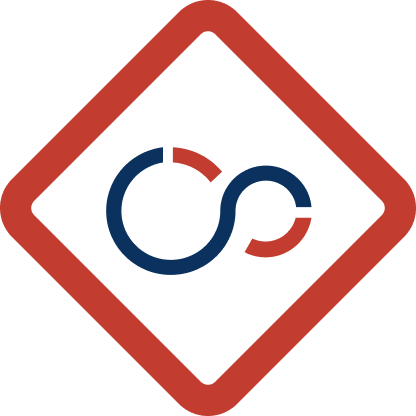So, you finally decided to start a blog? By making up your mind for blogging you have already accomplished 50% of the task. Now the only thing left is to decide what to write and where to write.
From my personal experience, I’ve seen a lot of ‘experts’ who tend to keep their knowledge sacred to them and don’t usually share it with others to guide them so that they don’t make the same mistakes. But, oftentimes they miss out on the reality of how rewarding the experience is when someone gets invaluable information from your content and reach out just to appreciate for sharing that information with others. There are a lot of people out there looking to do things differently and reading your unique experience helps them see things from a different perspective.
In this article, I’ll try to provide some guidance on why you should start blogging and what tools and platforms you should choose to get started with your writer’s journey. Stick to the end and reach out to me on Twitter if it provides value to you.
Research Your Content
The research deserves the first place regardless of how little we think about it looking at someone else’s post. It takes a huge amount of time and effort to gather information and also validate the authenticity of that information. The first thing you want to avoid is sharing misinformation with your fellow community members who might be relying on your information for any reason.
I personally blog about Azure Cloud which itself is a vast topic and of course you can’t be an expert in everything that it offers. However, starting small and picking up one topic (service) at a time will give you enough evidence on whether you need to switch gears and talk about something else or continue the same journey. You necessarily don’t have to niche down in the beginner as it is something that really depends on your expertise and interest, which will come out with time as you grow.
Area of Expertise
Pick something that isn’t a narrow niche at first but wide enough to not be all over the place. If you like cloud computing, start with Azure, AWS, or GCP and stick to it. You ideally should not mix the content and start talking about coding (unless you do code), or web development, blockchain, or anything unrelated to your core topic if that’s not your area of interest and expertise. People might’ve signed up to see more cloud-related information from you instead of a blockchain or web dev.
When you write about the topic that you are interested in, the research time literally drops significantly. You might’ve been doing that ‘thing’ for long enough that you don’t have to spend 4-8 hours preparing the demo (how-to’s) or read through the documentation to understand the basics and then explain to your audience. Start writing about something that you are familiar with already and grow into it.
In addition to that, if you are learning a new technology service, you can simply share that with your audience at the same time. In this way, you not only learn but also retain the information for a longer period of time after going through the whole process of learning and sharing.
You don’t need to be an expert to teach someone what you already know! Just get started and niche down later!
Why Do You Need to Blog?
There is already a lot of content out there on every topic. Why would you write about something that is already available? Why would somebody read your content anyway?
I had the same questions before I started writing and this very thought stopped me for a long time from blogging before I finally made my mind and decided to write anyway. The results were amazing and unexpected indeed. Even though I was working in the IT Industry, I didn’t have any connections that I could connect with and share my knowledge. Very little did I know that there were a lot of people looking for the exact information that I was withholding and wasn’t putting it out in words for them to hear or read.
No doubt, you will be blogging in ‘void’ for a while when you begin as you might not have enough content for someone to relate to and follow you. But, if you keep posting consistently, it won’t take very long before you start seeing engagement on your content.
I blogged for about 2 months in the void before I became active on Twitter and saw what I was missing on. I decided to be super active on the platform, sharing my knowledge, posting Blog updates, and commenting on the content that I find useful. The results were amazing. Here’s my Twitter Stats for October vs November 2020, most of which came by simply sharing what I was blogging about and learning every day.

By no means, it’s not the best, but FOR ME, it was a big shift to see the engagement and traction I received from the community members. If you are starting out specifically in Cloud Computing, be sure to follow #100DaysOfCloud on Twitter and Discord channel. You’ll find the community members in your area of expertise as well if you just get started.
Enough of talking, let’s get into some of the key reasons why it would be the best decision of your life to start a blog.
Solving Community’s Problem
You might’ve heard of the mantra “Knowledge is Power” which is so accurate. Knowing something is powerful but what’s more powerful is sharing that knowledge with others. By sharing your journey, content, and experience, you not only share the content but also builds trust with your audience. Build that unique position for yourself being a leader or a mentor for someone who relies on your knowledge to get ahead in their life.
The first thing I believe you do by writing your unique journey is, you solve a problem someone is looking for an answer for. Let me simplify.
When was the last time you encountered an issue at work or in life and couldn’t find any solution for it on the internet? Not even on the ‘the front page of the internet‘.😜
Now, what would have happened if you had solved that problem down the road and wrote a solution for that same problem so that next time someone encounters that same exact issue, your article can act as a guide for them to follow? Sharing your unique journey and method of solving a problem empowers more people and give them a new perspective to think from.
Taking on a New Challenge
There’s no better way of learning and retaining knowledge if you share what you do with other people. Whether you are learning a new technology or looking to add new skills under your belt. Sharing your journey improves the credibility of your knowledge and also builds your confidence over time.
A month ago, I started learning about Azure Web App and came across Next.JS which is relatively new in the development industry. Not knowing anything about Next.JS, I decide to incorporate that into my App Service Series. To my surprise, I wrote two articles around Next.JS and App Service and I started receiving messages on LinkedIn from people who read the blog and had the same exact issue deploying the web app to Azure. At that time, there was one open issue on GitHub on Vercel repo itself for the same exact issue and no resolution.
There was no article on the internet talking about Next.JS and Azure “without” using Static Web App other than my blog, which gave me a huge push to dig more deeply into that technology and solve more real-world problems that other community members are facing. A few months later, my blog appears to be listed on the first page of google result for “next.js on azure”.

It usually reminds me of the title of Cal Newport’s book I read “So Good That They Can’t Ignore You” which talks deeply about things you should be doing to succeed and get ahead.
If you don’t show up, nobody is going to notice you.
Exposure in the community
This goes back to blogging in the void. You might have heard this on how important and powerful the connections are. Connecting with like-minded individuals not only exposes you to a new world of information but also gives you the encouragement to keep doing what you started and push you for more. People have made life-long friends all across the globe virtually by simply connecting with them and supporting each other in their journey. I’ve seen a lot of folks who navigated through different job roles, just through their connections who referred and helped them with their new opportunity.
Don’t be left alone on this lifelong journey and start engaging with your community members whether it be web development, cloud computing, or the security field. There are a lot of people ready to help you if you just simply ask for it!
What Blogging Platform To Choose?
With tons of options to choose from, it gets little challenging on what blogging platform to choose from when you are starting your blogging journey. I myself consider this to be a very important decision as this is where you choose whether you want to “own” your content or let somebody else host it for you. You may be very picky like me and choose to host your own server or instead save money and use an established platform to host the blogs for you. Or you can do both at the same time. I’ll show you how!
Let’s explore what are some of the popular options for both self-hosted and other platforms that you can choose from:
Ghost Blog (Self-hosting)
Choosing a self-hosted Ghost Platform is a great decision if you can know how to configure a Linux web server and also keep up with maintenance while doing everything else. It doesn’t take a lot of time or effort for the first time, but I believe if something goes wrong down the road, you need to know a little bit of Linux to fix the issues. You also have to be a little careful when doing the Ghost CMS upgrade or host patching as it might break something in the process. I ended up redeploying mine a few months ago after messing up the update.
It is relatively simple to spin your own instance of Ghost at Digital Ocean that offers you One-Click Deployment for Ghost Blogging Platform which you can set up for your own domain name and get started in less than 30 minutes. Yes, it does take some time to set up the DNS, resolution, and then Ghost Admin center if you are not familiar with it.
Dev.to (Dev)
Dev is another leading blog platform that has a huge community of technical writers sharing their knowledge about different topics on development, coding, tips, experience, and so on. All you need to get started here is a Twitter, GitHub Account, or an email address.
Medium
If you are not familiar with Medium already, it is also another platform that lets you read and write blogs about almost anything. It can be technical or non-technical, there is no exact rule to be one side. Honestly, I’d avoid it if you are just getting started as the audience size of tech-related content is far less as compared to other self-help and get-rich articles.😜
Hashnode
Speaking of dev.to, I believe Hashnode has also gained a lot of traction from the dev community and a lot of new members are getting started to write on hashnode compared to other platforms. The user interface is super awesome and you can signup using Github, Google, LinkedIn, or an email account.
WordPress
I’d assume that you are familiar with WordPress, but again if you haven’t heard of it, WordPress is an open-source content management system. It is used by about 35% of the internet for web hosting and other services. The best part of WordPress is that it is easy to set up and customize but you have to maintain the platform to patch it as a new security update comes in. You may be able to find some free blog themes to start.
Takeaway: If you prefer to manage the hosting yourself and owning your content, I’d highly recommend spending $5/month on Digital Ocean to host a Ghost CMS instead of WordPress as Ghost is super easy to use, set up, configure and maintain. I love the robust SEO capability the Ghost offers out-of-box and the rich set of integrations if you are ever looking to add a membership to your blogging platform down the road.
If you want to focus on the content itself and care less about the type of platform, use HashNode and Dev. You can literally cross-post your articles on both websites and increase your viewership with an already established audience looking for related content to read.
What Tools Do You Need For Blogging?
It’s really important to plan out the tools that you need to facilitate your writing journey. Even though, you can use notepad to write down the content but, this is a more comprehensive list of what you need to kickstart your success in blogging.
Notion
I personally use Notion to store all my blog ideas, write blog content, plan dates, add notes, and overall keep track of what I have posted so far and what’s coming next. Notion is totally free for personal use and I’d definitely recommend putting this in your tools list. You can look up tutorial videos on YouTube if you want to learn how to use it, but you should not be missing out on it.
Here’s what my notion dashboard for blogs looks like. Use Kanban View and list down your blog ideas every time you have something in mind so that next time you come back to write, you can pick one of those topics and start writing. I started using the same database for both Blogs and YouTube videos to keep track of them at the same time.
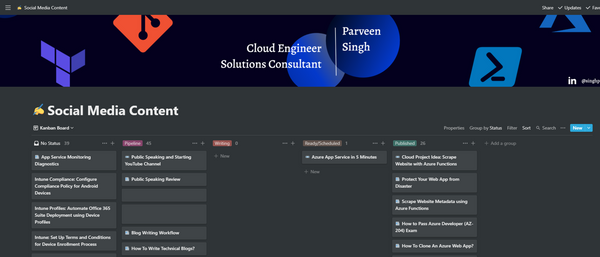
Grammarly and HemingwayApp
It is a good idea to check your grammar and spelling mistakes before hitting that publish button. In most cases, not checking the misspelled words creates a bad user experience as they leave your site without spending enough time on it, resulting in low google index ranking.
It’s totally free to get started with both Grammarly and HemingwayApp. You can download the Chrome or Firefox extensions for Grammarly. Hemingwayapp is available on the web only if you wish to use it for free.
HemingwayApp
Grammarly
Google Analytics and Search Console
Google Analytics and Search console are great ways to keep track of what your visitors are viewing over time and how your content shows up on the google search results.
With Google Analytics, you can track your overall progress of the number of views and page count to see which article received the most engagement. It’s the best way to improve over time and create more targeted for the audience content based on the trend that you see in your dashboard.
Search Console helps you track when your website’s appearance on the google search results. It shows you what keywords were used when your article received clicks and impressions. If you see the screenshot from my search results, you can really understand what keywords are bringing in the most traffic and clicks for your blog.
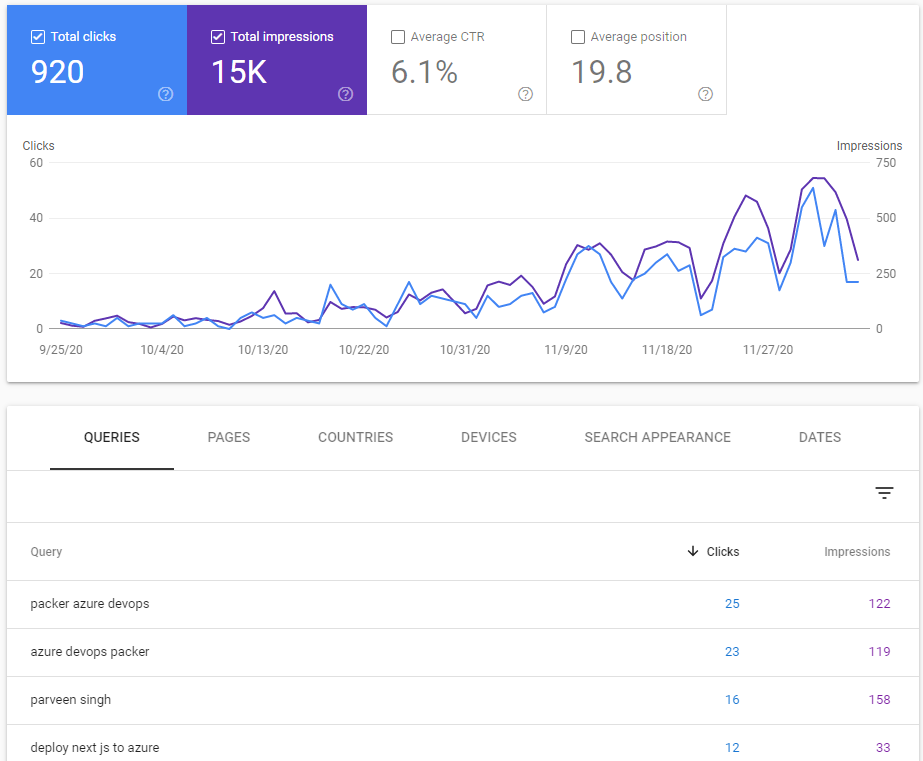
If you hosting your own blog using Ghost or WordPress, you can simply enable the Analytics for your website by signing up for Google Analytics Service. Hashnode gives you the ability to add your Analytics code however Dev.to shows you the view count inside the dashboard itself.
Keyword Search – Trend and SEO
If you want to go more advanced and optimize your content for Google search, you can use Google Trends and Keyword planner to see what keywords are getting the most queries and the average impression of a keyword on the search page.
Below is an example of what Google Trends shows you for any given keyword. It also provides suggestions on what people are searching for that’s relevant to the keyword you typed in.
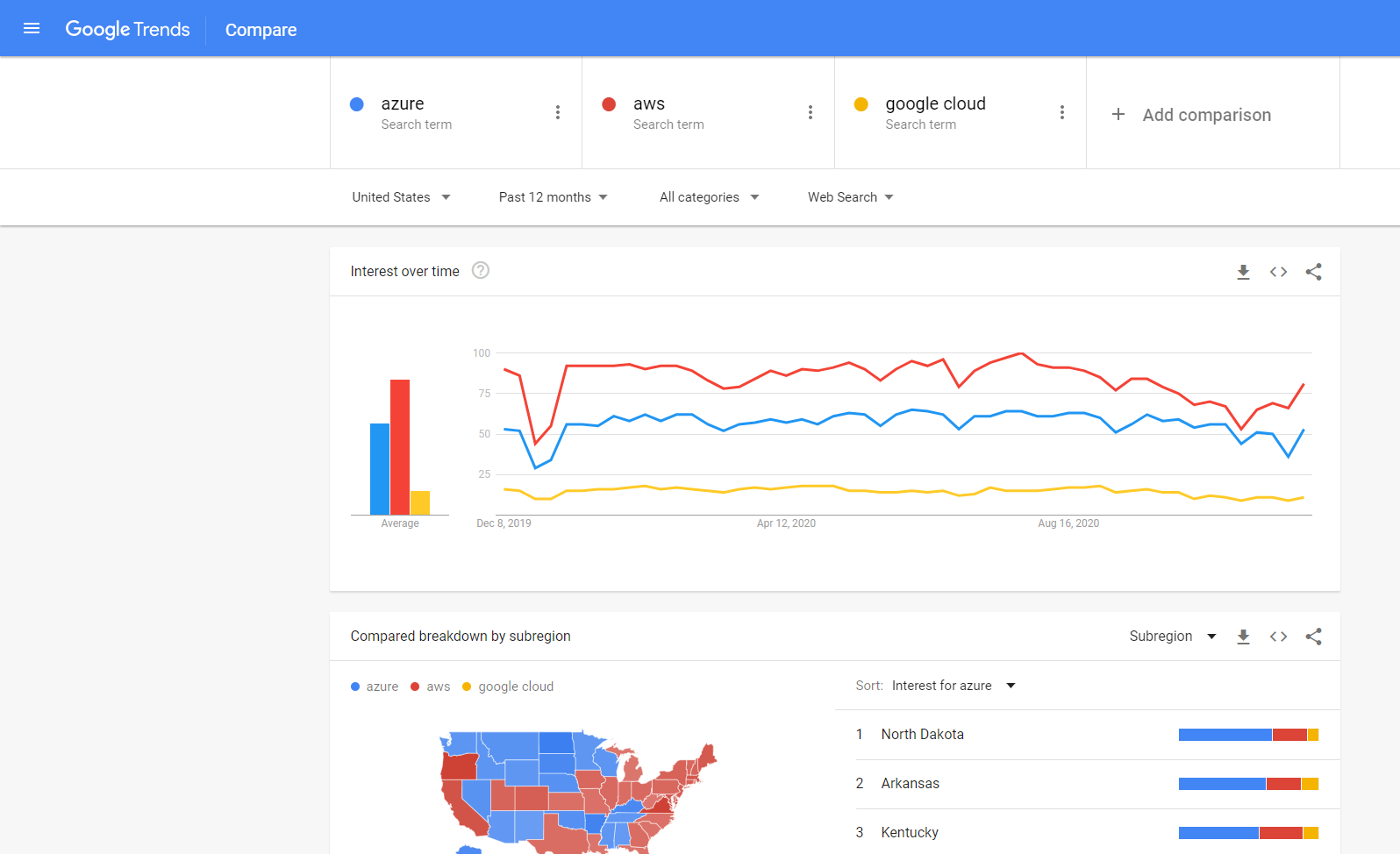
You can sign up for Google Ads Account and use the keyword planner here: https://ads.google.com/aw/keywordplanner
The Google Trends is available to use without any account at this URL: https://trends.google.com/trends/
Graphics For The Blog
You might think that you are a writer, not a designer. But trust me, nobody wants to read 5-10 minutes of the boring text-only article. After all, the content engagement increases drastically if your header image is catchy enough to make people read the content. An informative and descriptive image will give your audience enough information to hook them to your content and make them read more of it.
Keep in mind that you can’t use any available image on the internet to use for your website. There are options available to purchase stock images but I’d recommend using free stock images that you can easily find on Unsplash website. You will be able to find almost everything you need here without doing any customization and publish it on your blog.
If you want to be a bit more creative, consider using Canvas, BeFunky, or AdobeXD to create your own graphics as I do. I started with Unsplash which you can still find for some of my older posts but I started refreshing the content with custom graphics using BeFunky and now fully using Adobe XD for all the graphic designing. Use SVGs for the best quality as you don’t lose the original quality of the image, if using vectors.
Automating the Release and Sharing
Glad you made it to the last part!
As you build out more content for your website, you should start to consider the automation part of it as well. It can either be scheduled posting on the website, posting it across social media, or cross-posting the blog from a master source. This will save you a ton of time as you start writing more content and go through the same posting process over and over again.
Scheduled Posting
Firstly, if you have a scheduling feature available on your choice of platform, use that to schedule the release of your blog posts on the main site. Ghost and WordPress let you schedule a future date for your drafts and automatically publish them as the time comes.
Social Media Sharing
Next, if you are posting the blogs across multiple social media streams manually, consider using Hootsuite or SocialChief. Both of the services have a free tier with some limitations but this should at least take off a lot of burden on sharing your content on social media platforms. You can use any of these mentioned platforms to prepare your post for social media and schedule it for a later time that suits you. Try to target morning or evening time for the posts, or you can play around to see what time of the day gets you the most engagement.
Cross-Posting To Medium and Dev
Lastly, if you are cross-posting the same blog on multiple platforms, take advantage of the “RSS” feed from your main website, and automate the posting on different platforms. Let me explain how this is done.
Most blogging platforms will have this feature where you can use your website address like http://example.com and add \\rss or \\feed at the end to get the raw view of the content. If on WordPress, you should be able to achieve the same feature using any plugin. The RSS feed keeps track of recently published blogs and updates as new content are released. The client requesting the RSS feed can look at the feed difference since the last update.
I host my blog on Ghost Platform which gives me the ability to use \\rss to get the feed. I use the feed to post the same article on Medium using Zapier which is free for up to 5 zaps (rules). I created a zap rule to check the RSS and create a draft on Medium if there is any new article on my main website. I then go to Medium and finalize the draft as there is often some formatting issue with the content but it saves me a ton of time now as I started using this recently. Use this URL to get the prebuilt zap for RSS + Medium.
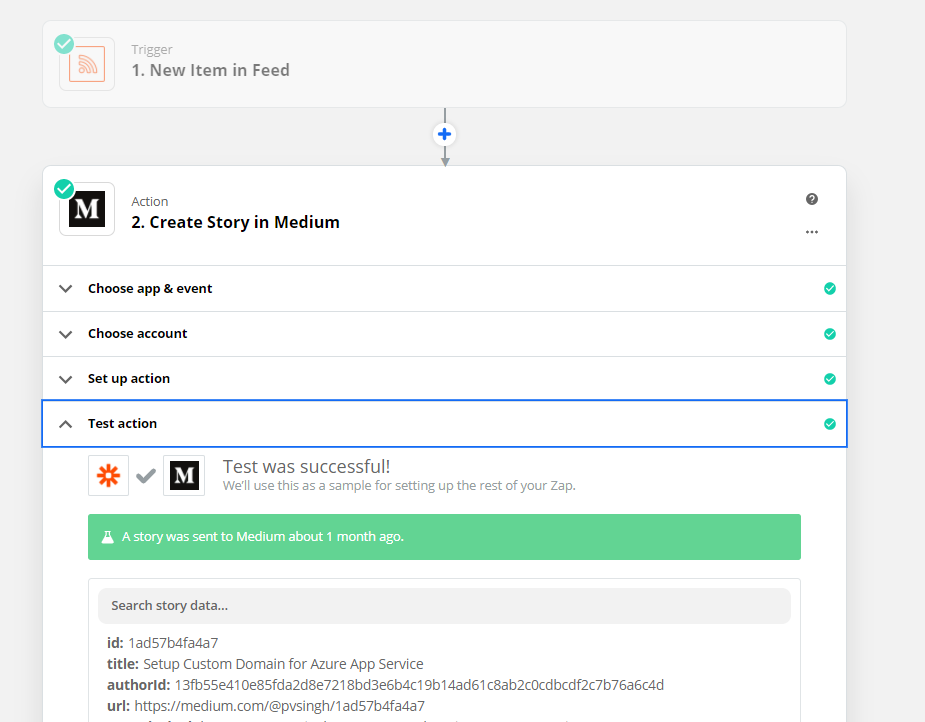
Another platform I use to cross-post my content is Dev.To. I use their built-in RSS feature that fetches the blogs automatically for me without any Zap configuration. RSS feed pulls in all the articles and creates a draft for each one of them. I then go to the drafts and publish them as needed.
The settings to configure the RSS is available at: https://dev.to/settings/extensions
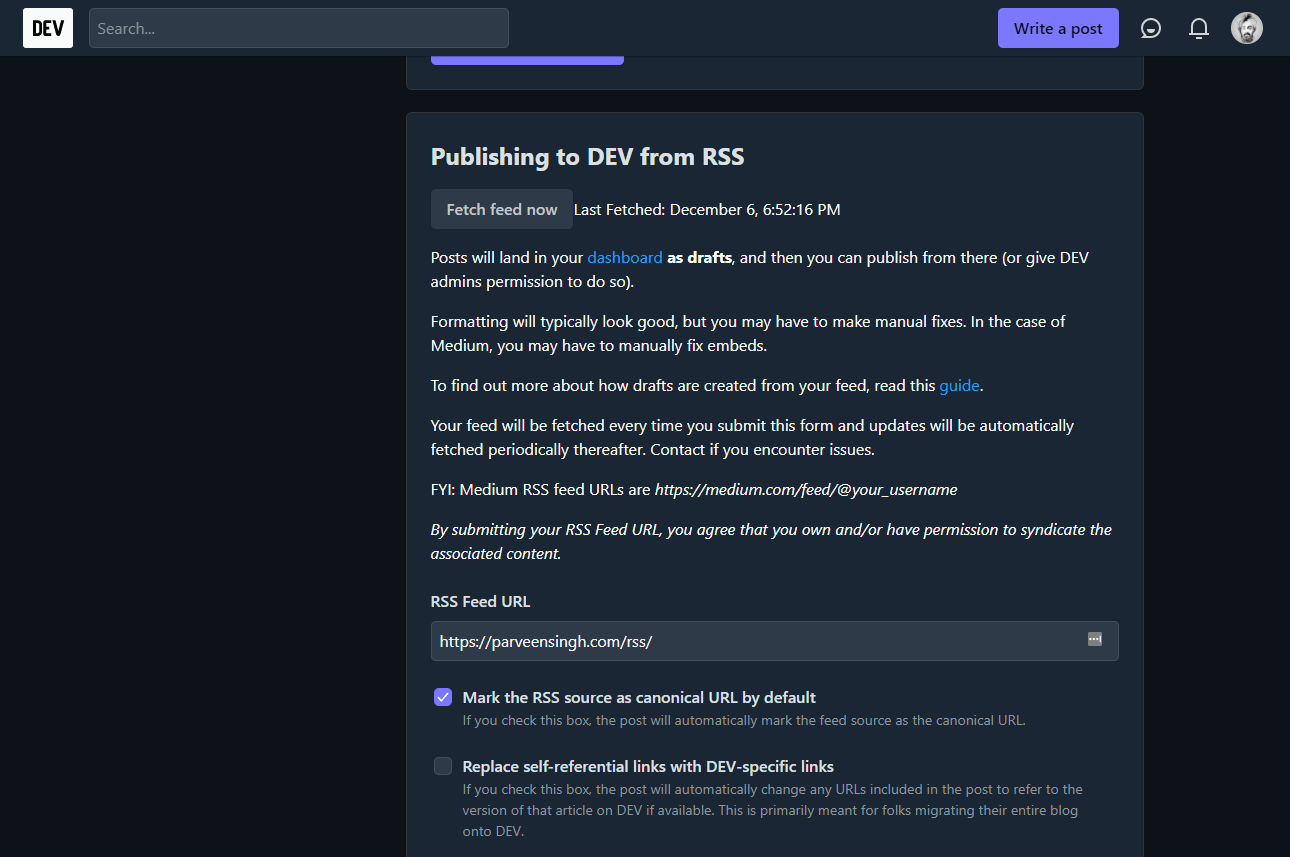
I highly recommend using canonical links wherever you can when cross-posting as it helps the reader refer to your original article and also validates the source of truth for your content.
Conclusion
I hope that was insightful if you were looking for this information. To summarize again, don’t wait for any special day when you will start writing or sharing your knowledge. That day simply won’t come! Share what you already know and help the ones that are getting started.
Again, if you finished reading this to the end, I’d love to hear if you find this useful or if it helped you write your first blog that you were thinking of writing for a long time. Retweet this and share if you have any feedback for me. We all learn from our mistakes and I’m open to hearing if you found any!
Discover more from Parveen Singh
Subscribe to get the latest posts sent to your email.
